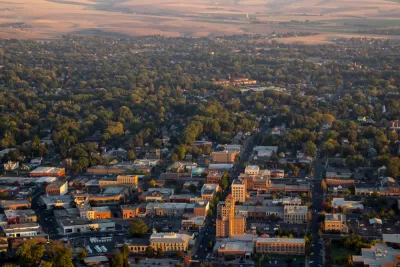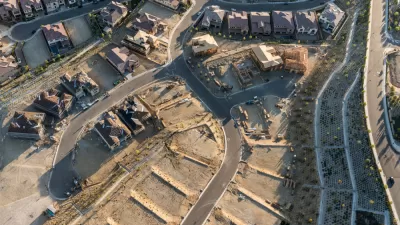The Washington city reformed its zoning code to support more multifamily development and a diversity of housing types to meet the needs of its growing population.

With their town surrounded by valuable agricultural land, officials in Walla Walla, Washington are particularly attuned to the need to rein in sprawl and encourage smart growth as the population grows. As Patrick Sisson explains in Planning Magazine, when it came time to update the city’s comprehensive plan, the city’s planners worked to reform and streamline complicated, outdated zoning codes and support more density and multifamily development.
“The answer was Neighborhood Residential (RN), a near-universal residential zoning designation that allows builders to go as dense as 75 units per acre, given that they still meet existing standards like landscaping, height, setbacks, parking, and lot coverage.” The city also updated regulations for accessory dwelling units (ADUs), eliminating owner-occupied restrictions and raising the size limit.
Sisson’s article details the changes, the process of getting them approved, and the positive reactions from many residents and builders. While Sisson admits that “So far, the numbers aren't showing a dramatic change,” due to the pandemic, there is some progress, and “developers have begun investing in new types of projects, including apartment complexes and conversions of motels into affordable housing.” According to Sisson, the city is also considering expanding a tax incentive for multifamily housing and creating a community land trust.
FULL STORY: Zoning Reform Creates New Model for Smart Growth in Walla Walla, Washington

Trump Administration Could Effectively End Housing Voucher Program
Federal officials are eyeing major cuts to the Section 8 program that helps millions of low-income households pay rent.

Planetizen Federal Action Tracker
A weekly monitor of how Trump’s orders and actions are impacting planners and planning in America.

Ken Jennings Launches Transit Web Series
The Jeopardy champ wants you to ride public transit.

Crime Continues to Drop on Philly, San Francisco Transit Systems
SEPTA and BART both saw significant declines in violent crime in the first quarter of 2025.

How South LA Green Spaces Power Community Health and Hope
Green spaces like South L.A. Wetlands Park are helping South Los Angeles residents promote healthy lifestyles, build community, and advocate for improvements that reflect local needs in historically underserved neighborhoods.

Sacramento Plans ‘Quick-Build’ Road Safety Projects
The city wants to accelerate small-scale safety improvements that use low-cost equipment to make an impact at dangerous intersections.
Urban Design for Planners 1: Software Tools
This six-course series explores essential urban design concepts using open source software and equips planners with the tools they need to participate fully in the urban design process.
Planning for Universal Design
Learn the tools for implementing Universal Design in planning regulations.
Heyer Gruel & Associates PA
Ada County Highway District
Institute for Housing and Urban Development Studies (IHS)
City of Grandview
Harvard GSD Executive Education
Toledo-Lucas County Plan Commissions
Salt Lake City
NYU Wagner Graduate School of Public Service




























